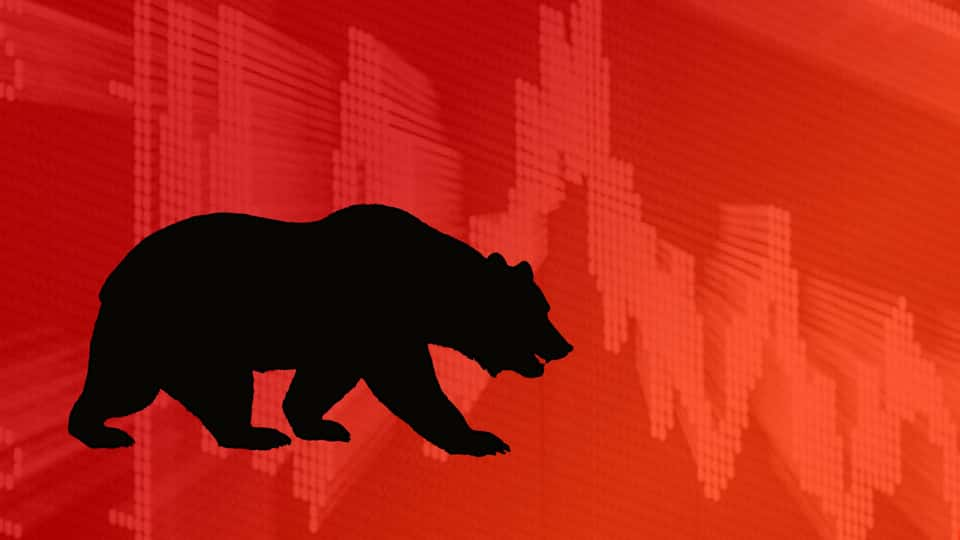The stock market is no longer raging higher as it was in 2020. But don’t doubt for a second that it is still very much a bull market for the foreseeable future. Thus investors should have an ample allocation to the stock market.
With that bullish outlook so clear, then I thought it would be interesting to spend our time today talking about the elements that could eventually bring the next bear market out of hibernation. The more prepared we are for those potential outcomes, the more alert we will be to get defensive at the right time.
Market Commentary
By the way, on Thursday September 9th we are having a webinar to launch our next newsletter: POWR Stocks Under $10.
This service is backed by an exclusive strategy that finds the best low priced stocks in the POWR Ratings universe that has resulted in a +62.88% annual return. And this year it is on pace for 86% gains.
Click the link below to register for the event. Even if you can’t join live at 2pm ET we will send you an on demand replay version to watch whenever convenient.
Register for POWR Stocks Under $10 Webinar >
Now back to the main topic of the day. That being the things that could potentially bring this bull party to and end with the next bear market ready to emerge.
On the simplest level we know that there are 2 main catalysts behind bear markets.
1) Economic Decline (Ex. Recession): When storm clouds circle over the economy and it darkens the outlook for corporate earnings then share prices naturally decline. This is the most prevalent catalyst that ignites a bear market.
2) Valuation Bubble: The value of the stock market gets so stretched that the only logical direction to go is down. This is much less common than the bear emerging from economic decline. However, in recent memory we have the bear market that emerged in 2000 as the tech bubble burst. And then you have the 1929 stock market bubble that imploded so badly that it kick started the Great Depression. But indeed it was stock valuation issues that got things rolling in the wrong direction.
So in general we need to discuss events that could trigger either one of these events. Here are the ones that come to mind in descending order of probability:
Persistently High Inflation: High inflation is often a precursor to economic decline and bear markets. That’s because consumers become so worried that inflation will only get worse that it leads to them consuming a lot more in the present for fear of prices being too high in the future.
At first the economy looks better from all that extra spending. But on the flip side of that is a pull back in spending which is the very definition of economic decline and recession.
No doubt you have seen countless articles in the past few months talking about inflation being 4-6% higher than last year. However, there is a good reason to believe this is just a short term hiccup as we are comparing today’s improving economy versus last years covid inspired economic disaster. The Fed is the most vocal about the transitory nature of this recent inflation which explains why they have taken no steps to tame inflation.
However, what if the Fed is wrong…and inflation does become a bit more permanent? In that case, then investors need to appreciate the negative consequences that come with that and become more defensive.
Higher Interest Rates: So if the historic low rate environment is the main catalyst for the bull market…then the removal of that catalyst could indeed awaken the next bear market. I most recently discussed this relationship in my 7/7 webinar. But really, anyone reading my commentary for the past 18 months knows that low rates is the primary reason for this bull market.
The abbreviated explanation is to say that when 10 year Treasury rates rise up closer to the earnings yield of the stock market (4.3%) then more investors will move out of stocks. Given that rates are under 1.4% at this time says there is still a lot of blue sky ahead for stocks before this catalyst kicks in.
Unfortunately all that blue sky for stocks is what could get valuations so stretched according to other traditional metrics like PE. So it is possible that the low rate environment lasts for so long that stocks just press higher and higher since still cheaper than bonds. Then they get to an unsustainable bubble level that kicks the next bear market environment into place.
Coronavirus: Imagine that the Delta variant is not the last mutation of the coronavirus. What if instead a much more deadly version emerges…especially one that renders all current vaccines useless.
No doubt you appreciate that this would be a very bearish event. That’s because it would come hand in hand with more societal shut downs that is most certainly a negative for the overall economy.
These 3 are the most likely scenarios to end this bull market. And thus it is prudent that we watch the signs vigorously to know when it is time to get more defensive in our portfolios.
Further, when it becomes 100% clear the bear market is at hand, then we would shift from defensive to downright aggressive, by leaning into the downward action with the ease of use of inverse ETFs. That is a much longer conversation that we will save for when the time is at hand. But for now just know that our goal is not to “survive” a bear market. Rather our goal is to “thrive” as there is plenty of money to be made as stock prices head lower.
Yes, there are more than these 3 scenarios to consider. However, most would be in the “Black Swan” or out of nowhere category. Even the idea of a trade war with China fits in this category as there is no serious concern of that happening now. But if and when one of these economy shaking events takes place, we would then assess the bear market potential in real time to adjust our investing strategy accordingly.
Gladly none of these bear market catalysts is currently at any level of serious concern. That is why the S&P continues to make new highs month after month.
A great analogy for that is to think of the stock market as a helium balloon. It’s natural inclination is to float higher. Thus, it takes some stronger, opposing force to hold it down like the ones we discussed above. And when those obstacles are removed the market gets back to its native state of rising higher.
That is why we continue with the bullish bias in our portfolio which is panning out for us quite handsomely. More details on that to follow…
What To Do Next?
The Reitmeister Total Return portfolio has beaten the market by a wide margin this year.
Why such a strong outperformance?
First because I focus on the macro trends that tell us if we are in a bullish or bearish environment.
Second, determine the industries and groups set to outperform in the days and weeks ahead.
Third, I hand-pick the very best stocks from across the POWR Ratings universe.
In fact right now there are 12 Buy rated stocks and 2 ETFs in the portfolio ready to excel in the days and weeks ahead.
That includes 2 new stocks I just added to the portfolio this morning because of their serious upside potential in this investment landscape.
If you would like to see the current portfolio, then start a 30 day trial by clicking the link below.
About Reitmeister Total Return newsletter & 30 Day Trial
Wishing you a world of investment success!

Steve Reitmeister
…but everyone calls me Reity (pronounced “Righty”)
CEO, Stock News Network and Editor, Reitmeister Total Return
Want More Great Investing Ideas?
SPY shares fell $0.06 (-0.01%) in after-hours trading Tuesday. Year-to-date, SPY has gained 21.54%, versus a % rise in the benchmark S&P 500 index during the same period.
About the Author: Steve Reitmeister

Steve is better known to the StockNews audience as “Reity”. Not only is he the CEO of the firm, but he also shares his 40 years of investment experience in the Reitmeister Total Return portfolio. Learn more about Reity’s background, along with links to his most recent articles and stock picks. More...
More Resources for the Stocks in this Article
| Ticker | POWR Rating | Industry Rank | Rank in Industry |
| SPY | Get Rating | Get Rating | Get Rating |
| .INX | Get Rating | Get Rating | Get Rating |
| DIA | Get Rating | Get Rating | Get Rating |
| IWM | Get Rating | Get Rating | Get Rating |
| QQQ | Get Rating | Get Rating | Get Rating |






